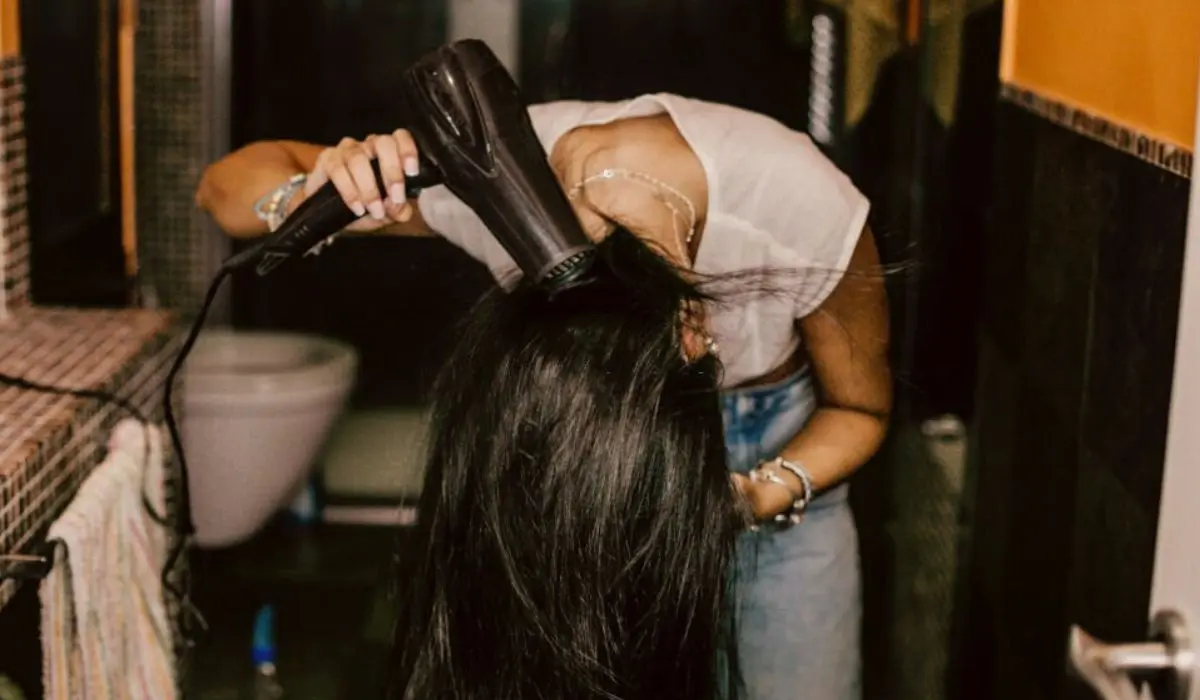Ah, the everlasting haircare confusion! Grab the trusty hairdryer, or let nature take its course? Our routines and quirks are shaped by how we grew up or where we live. But when it comes to drying your locks, it’s not just habit or convenience. There’s a whole science behind it! Do you go for the quirk and styled roach with a blow dryer, or embrace the gentle and natural air drying method? Let’s dive into this hairy topic and see what’s better for your tresses!
The Science Of Wet Hair
When hair is wet, it absorbs water and swells, putting pressure on the proteins that keep it intact. This swelling can cause hair to become more susceptible to damage. It’s a delicate balance between minimizing this swelling and avoiding the potential damage caused by heat styling tools.
Air Drying
Air drying, often considered the gentler option, has its downsides; prolonged exposure to water can lead to hair swelling, increasing the risk of damage to the hair’s structure. Dermatologist Elizbeth Bahar Houshmand notes that the longer hairstyles are wet, the more pressure is put on the proteins holding them together, potentially leading to damage.
Blow Drying
Blow drying, on the other hand, involves the application of heat, which can cause breakage, split ends, and hair loss if not done correctly. However, blow drying can mitigate these risks without heat or at low temperatures. The key is to avoid excessive heat and maintain a safe distance from the hair. Dermatologist Julia Tzu highlights that the proper blow-drying technique can cause less damage than air drying.

Doctors’ Advice On Headaches And Hair Drying
Contrary to ocular belief, wet hair hasn’t proven to be a consistent trigger for headaches or migraines, as stated by neurologist Mathew Robbins. However, for individuals with migraines.-associated scalp sensitivity, wet hair could exacerbate their condition.
Tips For Healthier Hair Drying
When it comes to drying your hair, it’s like walking a tightrope – you want to avoid the fall into damage-land. Here are some upgraded tips to keep your hair looking its best, whether letting it air dry or quickly blow dry.
For Air Drying
- Complete Drying: let your hair dry thoroughly before hitting the pillow. This reduces friction and the dreaded frizz.
- Gentle Detangling: Use a wide-tooth comb or your fingers to detangle gently.
- Avoid Rubbing: When towel-drying, at or gently squeeze your hair. Rubbing it vigorously with a towel can cause tangles and breakage.
- Microfiber Towels: Use a microfiber towel for a gentler, more efficient drying experience.
For Blow Drying
- Prep with Towel-Drying: Gently towel-dry your hair first to remove excess water. This reduces the time and heat exposure needed for blow drying.
- Heat protectant: Always use a heat protectant spray or serum. It’s like a sunscreen for your hair, guarding against heat damage.
- Optimal Distance and Setting: Keep the dryer 6 inches away and use a medium heat setting. Think of it as sunbathing – too close and you will get burnt.
- Section Your Hair: Dry your hair in sections. This ensures even drying and reduces the chance of overheating any one area.
- Cool Shot Button: Finish with cool air. This helps close the hair cuticles, adding shine and setting your style.
- Indirect Drying: Use a diffuser attachment if you have curly or prone-to-frizz hair. It spreads the airflow for a gentler drying process.
Personalizing Your Hair Drying Technique
Air and blow drying should depend on your hair’s type, texture, and health. Blow drying can add style and volume but might be more damaging for processed hair. Air drying is less risky but requires patience and the conditions to minimize damage.
The Bottom Line
So, what’s the verdict in the tremendous hair-drying debate? Well, it’s not black and white. Whether you are a team air-dry or a staunch blow-dry enthusiast, the key is understanding and adapting to the needs of your hair.
Remember, neither method is a one-size-fits-all solution. If you are leaning towards air drying, give your air the time it needs to dry naturally, but be mindful of the potential damage if it stays wet too long. If blow drying is more your style, keep it gentle. Use cooler settings and protect your hair from heat.

